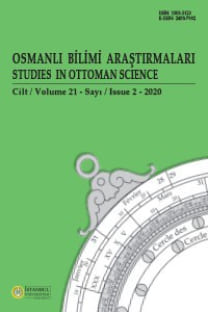Darülmuallimat ' tan inas Darülfünunu ' na
From women ' s teachers college to Ottoman women ' s university
The Ottoman administration’s perception of a Darülfünun (university), whatever the excellence of its educational staff and students may be, operating next to the traditional medreses, should be of particular interest. Historically, there were not only four attempts, as generally claimed, at establishing a Darülfünun between the years 1863-1933. Many other minor formations were included within these major attempts. In this respect, it can be said that, there is not a singular Darülfünun, but numerous and distinct Darülfünuns. The Darülfünun of Emrullah Efendi (1910-1912) was based on his so-called Tuba tree notion which held higher education or ‘the roots’, above basic training ‘the trunk’. The university Ziya Gökalp envisaged in the emerging period of Turkish nationalism (1913-1919) was also essentially different.With the end of WWI and the fall of the Committee of Union and Progress (CUP) from power, the Darülfünun could only be considered within a general policy of ‘budget savings’. The admission women into the Darülfünun, the joining of the Darülfünuns for boys and girls, the merging of the schools of fine arts for boys and girls, and especially the entrance of girls to the Medical School in 1922, all bear the pressure of economic necessities.The term İnas Darülfünunu (Women’s University), with its classical and academic connotations, does not signify a university or a college for women. İnas Darülfünunu or its present-day equivalent the Kız Yüksek Öğretmen Okulu (Teachers College for Girls) is a school of a level higher than the Darülmuallimat-ı ibtidaye, which was a girl’s school training teachers specifically for primary schools. The İnas Darülfünunu functioned as the higher (boarding) section of the same Leyli Darülmuallimat, aiming to train teachers for secondary schools, and proved to be the more beneficial aspect of the new educational program to train teachers. It should be noted that the CUP had originally conceived the function of this system as a means for the socialization and moral perfection of women.
___
- ISSN: 1303-3123
- Yayın Aralığı: Yılda 2 Sayı
- Başlangıç: 1995
- Yayıncı: İstanbul Üniversitesi Edebiyat Fakültesi
Sayıdaki Diğer Makaleler
Darülmuallimat’tan İnas Darülfünunu’na
Darülfünun kimya eğitiminde reform : I. Dünya savaşı yıllarında İstanbul ' a gelen üç Alman kimyager
Otto Schwarz ' ın ( 1900-1983 ) Anadolu florasına katkıları
Türkiye’de Eczane Sayılarının Sınırlandırılmasına İlişkin Düzenlemeler Ve Sonuçları
Ophtalmoscope Essad' İçin Ek Kaynaklar
Darülmuallimat ' tan inas Darülfünunu ' na
Edward Kent Balls ( 1892-1984 ) Bitki toplayıcısı ve yetiştiricisi
Dr. Gazimihalzade M. Halit Şazi Bey'in Özgeçmişi
